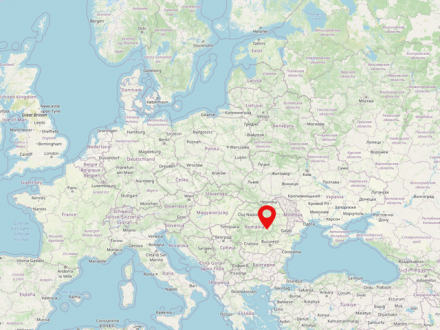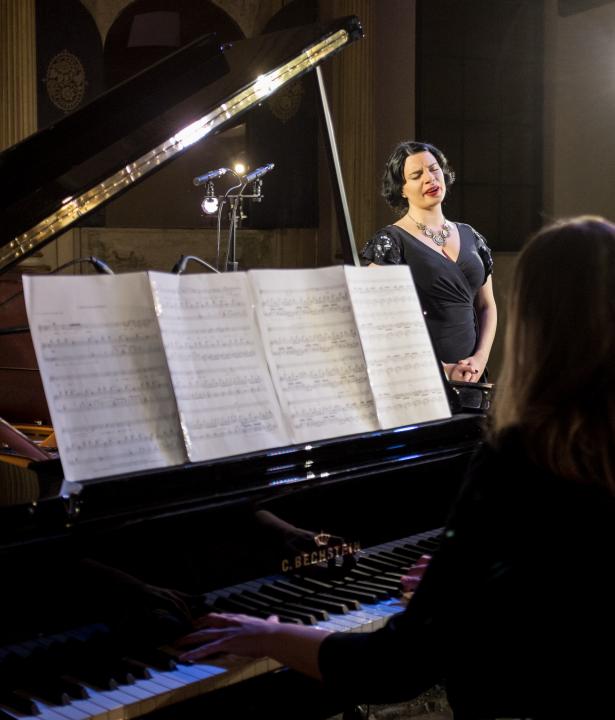Kronstadt/Brașov/Brassó: The multilingualism of this Romanian metropolis is reflected not only in its name but also in the city's literary history. Also, a recurring theme in the works of local writers was the city itself, as a space for encounters and experiences. A research project of the Institute for German Culture and History in South-eastern Europe (IKGS) shows how the political and spatial reorganization after 1918 had a lasting impact on the literary scene in Kronstadt and how this was reflected in and partly shaped by literature.
Text
Based on different spatial concepts of cultural studies-oriented literary studies, the project aims to explore in the first half of the 20th century as a setting for literary life and work. On the other hand, “space” is applied as a category of literary analysis and the project reflects upon the imagined Kronstadt in texts from the turn of the century up until the end of the Second World War. Taking the city's existing ethnic diversity as a starting point – with its multitude of different voices that cannot be found in the dominant national literary histories – the first step will be to examine the local literary scene in Kronstadt. Special attention is also paid to the literary discourses that accompanied the political and spatial reorganization after 1918. The second part of the project is devoted to comparative analyses of selected German, Romanian and Hungarian literary texts.
Brașov
deu. Kronstadt, deu. Krunen, lat. Corona, deu. Cronstadt, deu. Stephanopolis, ron. Orașul Stalin, hun. Brassó
Brașov is located in the historical region of Transylvania in the center of Romania and is a large city with almost 250,000 inhabitants. Brașov was one of the settlement centers of the Transylvanian Saxons.
Publications
Text
Final volume of the research project
- Enikő Dácz, Réka Jakabházi (Hgg.), unter Mitarbeit von Ana-Maria Pălimariu: Literarische Rauminszenierungen in Zentraleuropa. Kronstadt/Brașov/Brassó. Veröffentlichungen des IKGS. Band 141. Regensburg: Pustet Verlag 2020.
- reviews: Sunhild Galter. In: Germanistische Beiträge 47(1) 2021, S. 318–26. | Agatha Schwartz (University of Ottawa). In: Journal of Austrian Studies 55 (2022) H. 3, S. 141–144. |Laura Laza. In: Studia UBB Philologia, LXVI (2021) H. 3, S. 277‒280. | Orosz Magdolna. In: Jahrbuch der Ungarischen Germanistik 2020, S. 130‒ | Kati Teller, In: Zeitschrift für internationale Germanistik 12 (2021) H. 1, S. 213–215. | Marijan Bobinac. In: Jahrbuch für Internationale Germanistik 54 (2022) H. 1, S. 275–280.
**Studies and essays
** - Colonizing a Central European City: Transnational Perspectives on Kronstadt/Brașov/Brassó in the First Half of the Twentieth Century. In: Jenny Watson, Michel Mallet, Hanna E. Schumacher (Hgg.): Tracing German Visions of Eastern Europe in the Twentieth Century (Edinburgh German Yearbook 15), Rochester, New York: Camden House 2022, S. 35.
- „Die kleine Stadt der behäbigen Pfefferkuchenhäuschen“. Kronstadt als geteilter europäischer Erinnerungsort in ausgewählten literarischen Beispielen. In: János Szabolcs (Hg.): Erinnerungsorte und Kulturtransferprozesse im südosteuropäischen Raum. Wien: Praesens 2020, S. 213–224.
- Von der Peripherie ins Zentrum. Das posthabsburgische Kronstadt in ausgewählten deutschen und ungarischen literarischen Texten. In: Ana-Maria Pălimariu, Wolfgang Müller-Funk: (Hgg.): Narrative des Peripheren in posthabsburgischen Literaturen des zentral(ost)europäischen Raums. Editura Unversității ,,Alexandru Ioan Cuza”, Hartung-Gorre Verlag: Iași, Konstanz 2019, S. 101−112.
- Identitäts- und Alteritätskontruktionen in literarischen Zeitschriften am Beispiel der Karpathen (1907−1914). In: Alexandra Millner, Katalin Teller (Hgg.): Transdifferenz und Transkulturalität. Migration und Alterität in den Literaturen und Kulturen Österreich. Transcript Verlag: Bielefeld 2018, 297−322.
- Der Weg ins Zentrum und zurück. Kronstädter Literaten im Sog der Ideologie. Andrea Bánffi-Benedek u. a. (Hgg.): Netzwerke und Transferprozesse. Studien aus dem Bereich der Germanistik: Beiträge der VI. Internationalen Germanistentagung an der Christlichen Universität Partium. Praesens Verlag: Wien 2018, 157−170.
- Das literarische Burzenland – „Zwischenraum“ oder ideologische Topographie? Betrachtungen zu Heinrich Zillichs Zwischen Grenzen und Zeiten. In: Dies. (Hg.): Räumliche Semantisierungen. Raumkonstruktionen in den deutschsprachigen Literaturen aus Zentral- und Südosteuropa im 20.–21. Jahrhundert. Verlag Friedrich Pustet: Regensburg 2018 (Veröffentlichungen des IKGS, 135), 39–54.
- Kronstadt und das Burzenland zwischen Erinnerung und Utopie. Raumdiskurse im Vergleich. In: Andrei Corbea-Hoisie, Ion Lihaciu (Hgg.): Toposforschung (…) im Lichte der U-topie̕. Literarische Erörterungen in/aus MittelOsteuropa. Jassyer Beiträge zur Germanistik. Editura Universității „Alexandru Ioan Cuza“: Iași, Hartung-Gorre Verlag: Konstanz 2017, 393–404.
**Other publications:
** - Kronstadt/Brașov/Brassó. Eine siebenbürgische Stadt im Dialog der 1920er Jahre. In: Blickwechsel. Journal für deutsche Kultur und Geschichte im östlichen Europa. 2022 Nr. 10, S. 14‒16** **
Externe Links
External Image







